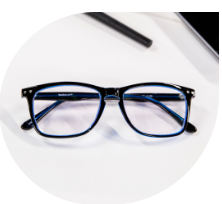Facts About Green Eyes
Both rareness and beauty make green one of the most fascinating eye colors. From deep emeralds to light sage, green eyes are found in a variety of shades. Several factors make this eye color intriguing and unique.
Green is the rarest eye color in the world. But although eyes may appear green, there is no actual green pigment in the iris (the colored part of the eye). The hue is made possible by a pigment called melanin.
Other interesting facts about this eye color include:
- Green eyes (and lighter-colored eyes in general) are more sensitive to light.
- Green is considered by many to be the most appealing eye color.
- Hollywood is full of green-eyed celebrities. Some of these include Terrence Howard, Scarlett Johanson, Paul Rudd, and Emma Stone.
Read on to learn more about these facts, where green eyes are most common worldwide, and how to flatter this eye color with a new pair of reading glasses.
How Rare Are Green Eyes?
As mentioned above, green is the rarest eye color — especially when compared to other eye colors such as blue, brown, and hazel.
Green eyes are more common in European countries than in other regions around the world. Only 9% of Americans and 2% of the global population possess this eye color.
In short, they’re rare due to the factors that determine eye color: genetics and melanin. Green is also hard to predict. Let’s dig in:










